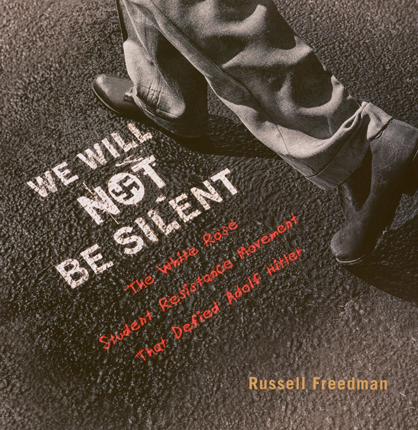Full Text Reviews: Booklist - 01/01/2016 *Starred Review* Freedman’s latest paradigmatic work of narrative nonfiction truly is a profile in courage, as it records the lives of Hans and Sophie Scholl, courageous siblings who helped found the White Rose, a student resistance movement that targeted Hitler’s regime in WWII Germany. University students by day, the two—along with other young people—produced freedom-extolling anti-government leaflets, of which thousands of copies were distributed. The Scholls’ actions were considered treasonous, and when they were ultimately discovered, the two young people were sentenced to death and executed. But the White Rose movement lived on, turning the Scholls into heroes of legendary status, as evidenced by a memorial to them being placed at Munich University, right alongside a White Rose museum. In this smoothly written, relatively brief book, Freedman recreates the lives of Hans and Sophie, who were models of intelligence, integrity, and bravery. He also brings to life the context for their actions, giving readers an exacting portrait of life and its hideous injustices in Nazi Germany. The milieu is also made vivid through the many black-and-white period photographs, including a number of portraits of Hans, Sophie, and their closest friends. Together they celebrated the human spirit in ways that will be long remembered. HIGH-DEMAND BACKSTORY: Few people have Freedman’s level of cred in youth nonfiction: a Newbery Medal, three Newbery Honor Books, the Sibert Medal, and on and on. Stock up. - Copyright 2016 Booklist. Bulletin for the Center... - 04/01/2016 The five children of Robert and Magdalene Scholl, coming of age in Ulm, Germany as Hitler rose to power, did not initially share their father’s distaste for the dictator and his Reich. Caught up in the allure of youth group activities and a bit of natural parental defiance, the elder siblings joined the Hitler Youth organizations with an enthusiasm that quickly diminished when the reality of criticism, censorship, and conformity kicked in. Although the siblings fulfilled their labor and military obligations, eldest son Hans focused on medical school and fourth child Sophie set her sight on university education. By the time Sophie reached the University of Munich in 1942, Europe was engulfed in war, Hans had formed a resistance cell called the White Rose, and public criticism of Hitler and his policies was a near-guaranteed death sentence. Sophie nonetheless joined her brother in distributing pamphlets so incendiary in their critique that the siblings became the target of a government manhunt, were captured, and were executed; their martyrdom ultimately incited others to join the resistance. Although working in a more traditional nonfiction format than Hoose’s interview-based The Boys Who Challenged Hitler (BCCB 7/15), Freedman achieves the same goal: to convey to adolescent readers how passion and disregard for personal safety, so often critiqued by adults as youthful recklessness, put students at the forefront of effective resistance that their elders were loathe to undertake. The double-columned text speeds by under Freedman’s compelling narration, and the reader-friendly layout features wide leading and one or more generously sized photographs on each spread. An index, source notes, and a selected bibliography are included. EB - Copyright 2016 The Board of Trustees of the University of Illinois. Loading...
|




